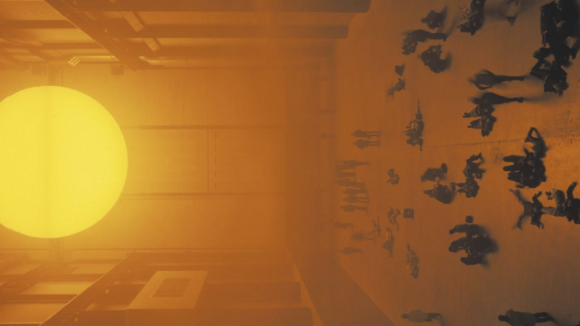
Question, apart from Destiny’s Child topping the charts with Independent Women Part 1, what do you remember about the year 2000? Well, Big Brother arrived on our screens, turbocharging the yapping monster that is reality television. In Preston, Dr Harold Shipman was found guilty of murdering 15 patients, though the figure was later rounded up to 250. And after recounts in Florida, George WMD Bush won the US presidential election. Basically, it was a crappy year, except for one thing. In May, 2000, in London, Tate Modern opened its doors.
Happy anniversary, you big bricky Shrek of an art behemoth! You changed things. That’s definite. We just need to decide if it was for the better.
Overstating the impact of Tate Modern is a challenge. If numbers are what you trust, then the repurposed power station at Bankside has been a spectacular success. In the opening year, they were hoping for 2 million visitors. Instead, 5.25 million turned up. For perspective, the combined visitor number for the three branches of Tate that already existed — Tate Britain, Tate Liverpool, Tate St Ives — was 2.25 million.
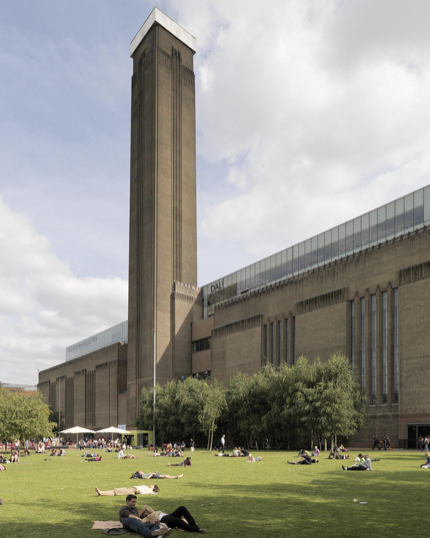 Since that dizzy opening, the numbers have continued to accumulate. These days, Tate Modern is easily the most popular gallery of modern art in the world, regularly pushing an annual viewership of 6 million. For a location that consists mostly of open spaces, lightly sprinkled with the odd moment of art, that is some achievement.
Since that dizzy opening, the numbers have continued to accumulate. These days, Tate Modern is easily the most popular gallery of modern art in the world, regularly pushing an annual viewership of 6 million. For a location that consists mostly of open spaces, lightly sprinkled with the odd moment of art, that is some achievement.
What, though, if we are not talking popularity? What if we move into the altogether trickier territory of contribution and influence? After all, by far the best-attended exhibition in 19th-century Europe was the Salon in Paris, seen annually by a million visitors. In attendance numbers, the Salon was an unparalleled success. People crossed seas to see it. So what happened to it? Well, a gang of paint-splattered naysayers, who disliked what it stood for, put on their own jejuneshow in a wonky first-floor studio on the Boulevard des Capucines. Somebody dismissed them in print as a bunch of “impressionists”, and the insult stuck. Art history was rerouted.
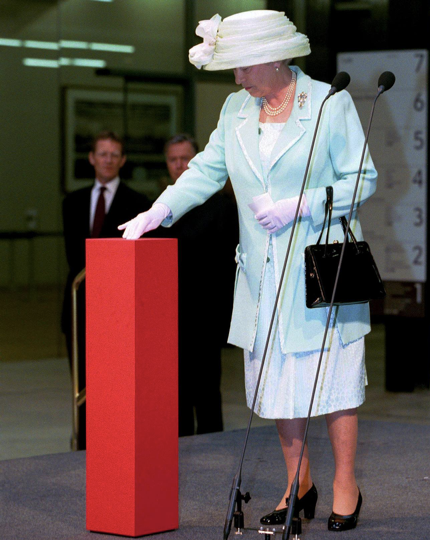 The impressionists were rebels. The Salon was the establishment. With Tate Modern, the opposite was true. The official opening of the gallery in May, 2000 was performed by the Queen. She wore duck egg blue, while the new mayor of London, Ken Livingstone, was in socialist grey. I was there as well, but so tiny was our monarch as she wandered down Tate Modern’s looming Turbine Hall that she may as well have been an ant on a football field. A giant metal spider, created by Louise Bourgeois, heavy-lifted on to the central platform, gave the event a memorable emotional heft. The Queen was tiny. The spider was enormous. It all felt like a changing of the gods.
The impressionists were rebels. The Salon was the establishment. With Tate Modern, the opposite was true. The official opening of the gallery in May, 2000 was performed by the Queen. She wore duck egg blue, while the new mayor of London, Ken Livingstone, was in socialist grey. I was there as well, but so tiny was our monarch as she wandered down Tate Modern’s looming Turbine Hall that she may as well have been an ant on a football field. A giant metal spider, created by Louise Bourgeois, heavy-lifted on to the central platform, gave the event a memorable emotional heft. The Queen was tiny. The spider was enormous. It all felt like a changing of the gods.
In the months leading up to the opening, Tony Blair’s government had been piling up the weight of national expectation on the big rebirth of Bankside. Symbolically, there was a lot riding on it. Various architectural projects, aimed also at the millennium moment, were wobbling, notably the Millennium Bridge spanning the Thames between Tate Modern and St Paul’s, which opened in June 2000 but lasted only a couple of days before its crazy swaying forced a two-year shutdown. As one of the lucky few who tangoed across it in its full wobbly mode, I can assure you it was terrifying, and badly needed closing.
Down the river at Greenwich, the Millennium Dome, which had opened with a dire exhibition celebrating the future, had attracted half the visitor numbers they were expecting. My TV colleague Jonathan Meades described the Dome as “the museum of toxic waste”. No one was ever going to plant the flag of the 21st century in it. So that hefty symbolic task fell, instead, to Tate Modern.
The rebuild itself had been impressively smooth — on time, on budget, efficiently done. Yes, £134m was loadsamoney, but they needed to turn a blackened and enormous industrial cavity, 660ft long, filled with huge slabs of industrial junk from its previous role as a power station, with a useless chimney attached rising 325ft into the sky, into a state-of-the-art museum devoted pointedly to the state of the art. It was some ask.
When they started the work, in 1995, I was head of arts at Channel 4, so I commissioned a series of observational documentaries on the project that were finally aired when it was finished. It meant I got to see the inside of Bankside when it was still an abandoned power station. Nicholas Serota, the director of the Tate, took me on a personal tour of the vast, dripping, pigeon-filled blackness. It was so big, so damp. This was no place for an art gallery, surely?
But Serota was right, and I was wrong. And if you need evidence of the possibilities of transformation or the power of vision, queue for Tate Modern. What Serota and the architects of the project, Herzog & de Meuron, grasped, and I did not, was that the new building was seeking a new kind of presence. The gigantic size that seemed to me to defeat the purpose of art, which was to achieve an intimate communication between an artwork and a viewer, was actually a big aesthetic plus.
It’s something Wordsworth initially noticed in The Prelude, where he compares himself with the looming black mountain that he is passing in his little rowing boat. If you want to feel sublime, you need to feel small. When Her Majesty rattled about the Tate on May 11, 2000, like an iron filing at Paddington station, she set the seal on an experience that depended aesthetically on overwhelming and impressing the visitor.
From the start, Tate Modern displayed a ferocious appetite for bigness. The giant spider that Bourgeois plonked down in the opening display, Maman, became the maman, in the years ahead, of a fantastical sequence of oversized Tate successes. In 2002, Anish Kapoor filled the Turbine Hall at Zeppelin height with a blood-red ear trumpet, Marsyas, so huge there was nowhere from which you could see it all. In 2005, Rachel Whiteread brought in 14,000 white boxes, in an installation, Embankment, that made the looming vestibule look like an albino branch of Costco. In 2007, Doris Salcedo put a deliberate crack in the floor that went from one end of the Tate to the other: 548ft. In 2010, Beijing rebel Ai Weiwei covered the concrete with 100 million artificial sunflower seeds, each one handmade by a Chinese craftsman.
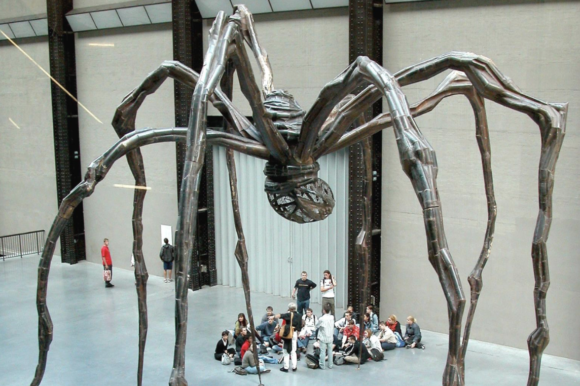
But it was in autumn 2003 that the depth, height and width of the grand canyon at the centre of Tate Modern had its finest moment when the Danish-Icelandic eco-artist Olafur Eliasson, of whom few of us had heard, inserted an artificial sun into the end wall and made it the focus of a gallery event he called The Weather Project.
It was as if the summer holidays had come round for a second burst. Eliasson lined the roof of Tate Modern with tinfoil — at least that’s what it looked like from the ground — so anyone staring up could see themselves reflected perfectly on the ceiling. And the best way to do that was to lie on the floor. Which is what everyone started doing. By the end of the first week, there were more people stretched out on the concrete at Tate Modern than were sitting on the grass at St James’s Park.
People were playing Frisbee in there. Reciting poetry. Someone brought along an inflatable canoe and someone else started having yoga classes.
The Weather Project ticked every box. The giant sun, with its Turneresque mood, struck a sublime note when such a note was needed. Earlier that year, George W Bush, with our own Tony Blair, had invaded Iraq, and a setting sun could have been their flag. Meanwhile, the burgeoning 21st-century appetite for identity and me-ism found a perfect vehicle of record in those mirror-clear reflections on the Tate Modern ceiling. Without knowing it, Britain’s biggest gallery had invented a new way of liking art.
This was the Instagram future in its earliest installation form. And when they weren’t spread-eagled on the Turbine Hall floor or skateboarding down the ramp, the new art lovers were spending money in the cafe, the bookshop, the knick-knack emporium. Modern art had become a cash cow. And Tate Modern became very skilled at milking it.
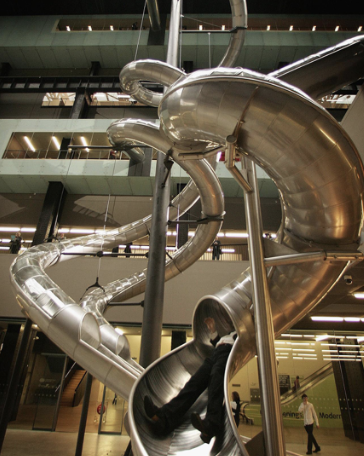 As the building expanded, so the need increased to lure visitors through the door. Whatever it took. In 2006, Carsten Höller filled the Turbine Hall with silver helter-skelters down which we slid, happily screaming. In 2017, the art collective Superflex packed the space with swings. The older Tate Modern grew, the more it looked and felt like Alton Towers.
As the building expanded, so the need increased to lure visitors through the door. Whatever it took. In 2006, Carsten Höller filled the Turbine Hall with silver helter-skelters down which we slid, happily screaming. In 2017, the art collective Superflex packed the space with swings. The older Tate Modern grew, the more it looked and felt like Alton Towers.
In 2012 an idiot who called himself a protest artist painted his name and the date on Mark Rothko’s impeccably profound abstract expressionist painting Black on Maroon. Rothko had donated it to the Tate because he was dismayed to see it on the walls of the Four Seasons restaurant in New York as originally intended. Now a baby-brain, who’d been given succour by the moods at Tate Modern, was gleefully vandalising it in the name of art. Earlier the same year, some real kids were caught using a Donald Judd sculpture as a climbing frame. When you present yourself as a playground, you encourage playground rules. Tate Modern was feeling more like a creche than a temple of enlightenment.
But we’re rushing ahead of ourselves. Something else that commenced in 2000 at Bankside was a succession of stirring and definitive retrospectives of the great modern artists, which continues to the present. And here, not even an unbreakable curmudgeon like me can find much to fault.
For 100 years, the old Tate gallery at Millbank had lagged behind MoMA in New York in the range and presentation of its holdings. MoMA had the best modern art, the Tate didn’t. My suspicion is that director after director of the Millbank mausoleum had kept a bucket list of the big retrospectives they would have loved to mount, but couldn’t. Now, suddenly, they could. So out came the lists.
The exhibitions that resulted form a glorious sequence: Picasso and Matisse, Rothko, Barnett Newman, Gauguin, Modigliani, Hopper, Warhol. And then, on the other side of the gender divide, Frida Kahlo, Sonia Delaunay, Yayoi Kusama, Dorothea Tanning. Boy were those good shows.
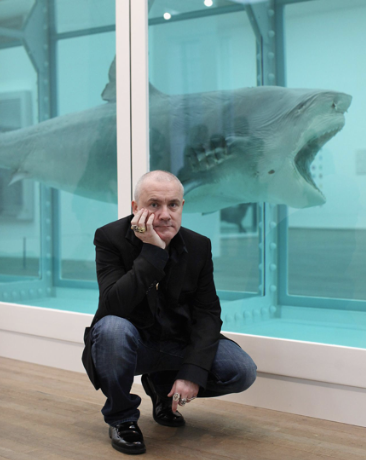 In 2012, to coincide with the London Olympics, Damien Hirst was let loose on the building and filled it entertainingly with sharks and butterflies. Big shows done well is what Tate Modern has done best.
In 2012, to coincide with the London Olympics, Damien Hirst was let loose on the building and filled it entertainingly with sharks and butterflies. Big shows done well is what Tate Modern has done best.
But not all the consequences of the tussle for supremacy with MoMA have been as beneficial. When Serota was showing me around the dank shell of the power station, and we wandered from giant room to giant room, staring at ceilings that seemed miles away, the immediate worry I had was that the new gallery hadn’t a hope of filling all this space. There simply wasn’t enough good modern art in the national collection to make a dent in these vacuums. What I didn’t know at the time was that Serota had a plan. If what was there wasn’t enough, show something else. If the old story didn’t get you there, write yourself a new one.
In the old days, at Millbank, the modern art in the national collection had been displayed chronologically. On this simple washing line everything had a place. This was also how MoMA showed its holdings. This was how pretty much every museum in the world arranged its possessions. One date following another date.
But it was precisely because MoMA had so much of the best modern art that Tate Modern had so little. Serota’s solution to this was to dump chronology in the Thames and put the building itself, and your journey through it, at the heart of the Tate Modern experience. The space was too big for the collection, but those holes could be filled with contemporary art. Modern art was small. Contemporary art was big. By mixing the two together, by using one to validate the other, and then inventing some vague themes that appeared to draw the two together, the new gallery could simultaneously get round the chronology issue and the space issue.
The result was a chaotic opening display that ditched the rules of reason and replaced them with the rules of Snap. Monets from the 1910s were hung opposite Richard Longs from the 2000s, solely because both were wall-sized. Carl Andre, of Tate bricks infamy, who works with squares, looked up at a Cézanne with some square-ish shapes in it. A cubist painting by Braque featuring a glass was displayed next to a conceptual wall-piece, also involving a glass, conceived by Michael Craig-Martin in the 1970s.
“It’s like taking the Pokémon movie and showing it in the same cinema as Citizen Kane,” I moaned at the time, “because both happen to be films.” No sign of national schools. No sign of recognisable isms. A clear preference for the art of the past 20 years. What was once a queue was now a free-for-all. The opening hang of Tate Modern was a barbell dropped on the soul of the sensitive. Britain’s most revered art critic, David Sylvester, friend of Francis Bacon, friend of Lucian Freud, set up a wailing that could be heard across the Atlantic. “Chronology is not a tool of art-historical interpretation which can be used at one moment, discarded at another,” he wept. “It’s an objective reality, built into the fabric of the work.”
It was horrible. But — and this is important — it was not a complete surprise. Most of the softening up that made this approach possible had already taken place. These days, we like to think that Tate Modern was responsible for a dramatic turnaround in national taste, that we used to be a nation of modern-art haters, but are now a nation of art lovers. The transformation is true. But that battle was won long before May, 2000.
By the time Her Majesty in duck egg blue sounded the opening gong at Tate Modern, the Turner prize, back at the old Tate on Millbank, had long since succeeded in shifting contemporary art from page 36 of The Sun to the front cover. Even before the Turner took off, ad-man-turned-collector Charles Saatchi had awakened a fierce interest in rich people for acquiring contemporary art. And where money goes, taste follows.
Saatchi’s Sensation show at the Royal Academy in 1997, with all the brouhaha that attended it about shock artists and Brit Art, was the end of an awakening not the start. When Tate Modern opened its sliding doors in 2000, the ground work was in the past. All that still needed to happen was for contemporary art to have its dangerous, dangling cojones amputated, and for it to be turned into a safe family experience. Which is what Bankside served up.
Getting rid of chronology, of the sense that one thing followed another, removed not only the gaps in the collection, but also the canonic notion of a connected culture. Instead of being understood as a progressive unfolding, art, in the new Tate model, was now presented as a relentless sequence of experiences. There was no beginning, no end. There was only the eternal present.
It was an idea from which Tate Modern itself, having survived a fierce initial biting, soon began to draw back. In the big retrospectives, there was an increasingly obvious desire to place important moments in a sequence: even the brightest laundry needs a washing line.
Not that the millions who poured into Bankside to play on the swings or skateboard down the ramps had come to be lectured about dates. They came for the excitement, the buzz, that dizzy blast of artistic possibility that Tate Modern, at its best, conveys so generously. You would have to be a very wizened old rower indeed, who has sailed past far too many black mountains, not to recognise the rush of sublimity that assails you when you step on to the Tate ramp. Cathedrals, railway stations, Tate Moderns are big for a reason.
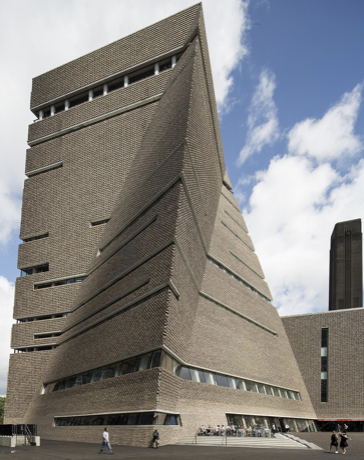 And, of course, you can’t argue with the numbers. All around the world, people were noticing the success of Tate Modern and adopting its methods. In collection after collection, art seemed constantly to be being reordered, jazzed up, rehung, thrust into new situations. Where once we had an evolution we now had a frantic hunt for the wow factor. In 2016 the gallery spent £260m on another gigantic extension that any reasonable observer would conclude it didn’t need. But when did reason ever come into it at Tate Modern?
And, of course, you can’t argue with the numbers. All around the world, people were noticing the success of Tate Modern and adopting its methods. In collection after collection, art seemed constantly to be being reordered, jazzed up, rehung, thrust into new situations. Where once we had an evolution we now had a frantic hunt for the wow factor. In 2016 the gallery spent £260m on another gigantic extension that any reasonable observer would conclude it didn’t need. But when did reason ever come into it at Tate Modern?
Right now the champagne corks were supposed to be popping again at Bankside in a big 20th-birthday celebration. Lots of things were supposed to be happening. Louise Bourgeois’s giant spider was supposed to have scuttled again into the Turbine Hall to re-frighten us with her looming and predatory femininity. Hurrah. And Yayoi Kusama, like Andy Warhol, was supposed to have returned for a second visit. But they will have to wait for the 21st-anniversary knees-up.
During the lockdown, the gallery has tried to keep us amused with digital walk-throughs and video reruns of its shows. But they haven’t been great. Watching all this at home on a laptop is an entirely different and lesser experience to walking into the vastness of Bankside.
Word has it that the Tate bosses have been using the time to rethink the gallery role, and that they are preparing to emerge from the lockdown with fiercer ambitions to improve and instruct the nation on its cultural values. Oh dear. When the establishment sets out to improve the populace, it never turns out well. Look what happened to the Paris Salon. But hey — if 2020 has taught us anything it is to expect the unexpected.
So happy birthday, Tate Modern. You changed the way the game was played. Not always for the better. But as I sit here now in my bookish isolation, surrounded by all the chronology a man could possibly want or need, I definitely miss that gigantic ramp of yours. Can anyone lend this old guy a skateboard?
